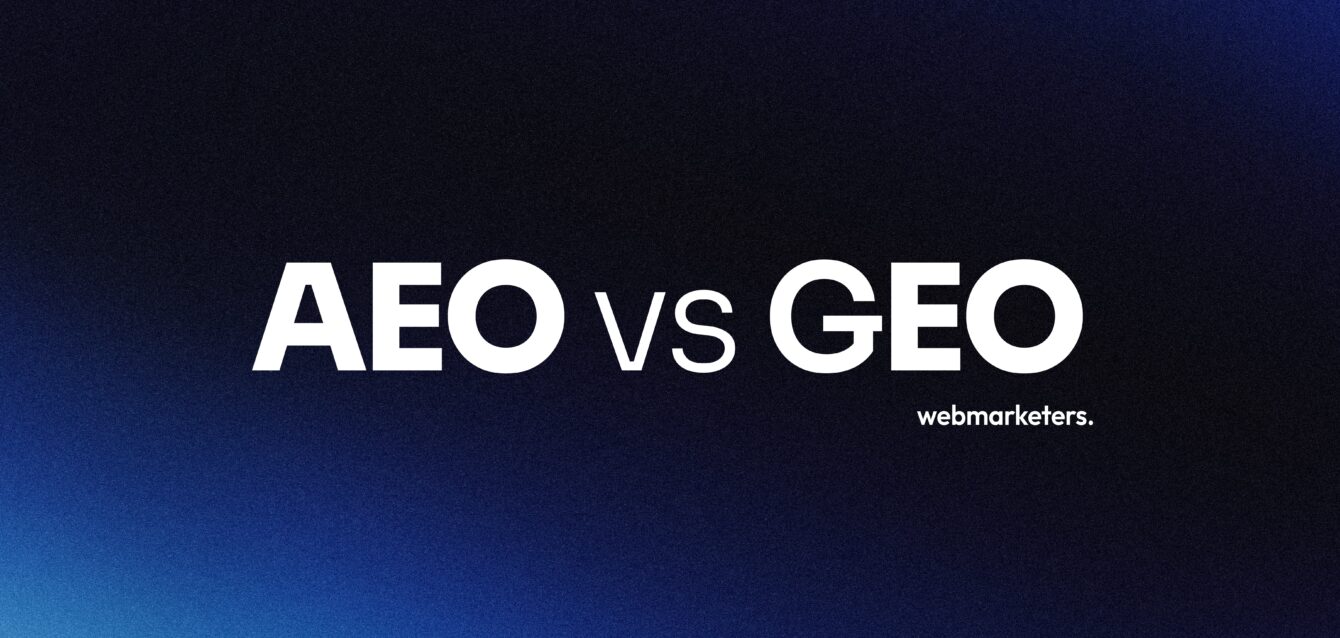SEO isn’t dead, it’s just changing names.
As AI transforms how people search, two new optimization strategies have emerged as critical: AEO (Answer Engine Optimization) and GEO (Generative Engine Optimization).
If you’ve noticed a dip in organic traffic or if your high-ranking content is suddenly seeing fewer clicks, you’re not alone. AI-powered search features are reshaping the landscape, surfacing direct answers, summaries, and synthesized responses before users even see traditional search results.
So, what’s the difference between AEO and GEO? And more importantly, how can you adapt your SEO strategy to stay relevant and drive conversions?
Table of Contents
What Is AEO? (Answer Engine Optimization)
AEO is about creating content that satisfies direct, factual, and concise answers to user queries.
AI-powered search experiences like Google’s AI Overviews, Bing Copilot, and ChatGPT with browsing are increasingly pulling in these quick answers from multiple sources. If your content is structured well, factual, and authoritative, you might be chosen as a source for these AI-generated answers.
Common AEO Triggers:
- “What is…”
- “When did…”
- “How many…”
- “Define…”
- “Benefits of…”
These types of queries are typically low-conversion, high-frequency. They reflect informational intent.

What Is GEO? (Generative Engine Optimization)
GEO focuses on content that is synthesized and contextualized by AI into a cohesive, conversational response. These engines are less about grabbing one-sentence answers and more about pulling multiple perspectives and formatting them into an intelligent response.
Think of GEO as optimization for:
Chat-based interfaces (like ChatGPT, Perplexity, Claude)
Long-form AI summaries
Multi-source opinion or solution generation
AI features in SERPs that summarize and compare sources
GEO queries look like:
“Best CRM tools for small businesses”
“How to increase website conversions without paid ads”
“Compare Notion vs. Evernote for project management”
These searches typically reflect directional or decision-making intent, closer to conversion
Key Differences Between AEO and GEO
| Feature | AEO | GEO |
|---|---|---|
| Purpose | Provide direct, factual answers | Provide synthesized, multi-source responses |
| User Intent | Informational | Directional / Decision-making |
| Content Format | Short, structured answers (FAQs, glossaries) | Rich, contextual content (comparisons, how-tos) |
| AI Behaviour | Extracts single-line facts or definitions | Synthesizes multiple viewpoints |
| Best Used For | Featured snippets, AI Overviews, voice search | AI chats, long AI summaries, product research |
| Conversion Potential | Low (top of funnel) | High (mid to bottom of funnel) |
When Should You Focus on AEO?
You want to own visibility for core definitions or evergreen questions in your niche.
Your site gets traffic from voice search, smart assistants, or Google’s AI Overviews.
You have a FAQ, glossary, or knowledge base that can be structured clearly.
You’re trying to improve brand visibility even when clicks are low.
Pro Tip: AEO is great for brand reinforcement and authority-building, even if it doesn’t always drive immediate traffic.
When Should You Focus on GEO?
You want to be cited in AI-written summaries that users trust for decisions.
You’re targeting mid-funnel buyers doing comparison research or exploring solutions.
You create original insights, reviews, or frameworks that AI might reference.
You want to get featured in AI tools like Perplexity, You.com, or ChatGPT plugins.
Pro Tip: GEO-optimized content is more likely to be used in multi-step buying journeys making it highly valuable.
How to Optimize for AEO
Answer Questions Clearly & Directly
- Use simple, structured responses at the top of your content.
- Ideal format: “What is [keyword]? [Concise answer in 1–2 sentences].”
Use FAQ Schema Markup
- Add structured data so search engines can identify answer-ready content.
- Implement Q&A, How-To, and FAQ schema on relevant pages.
Create Glossaries and Knowledge Hubs
- Break down industry terms, acronyms, and concepts in easy-to-digest format.
Write for AI Parsers
- Use bullet points, headers, and short paragraphs.
- Avoid fluff; aim for factual, evergreen info.
Source Trust Signals
- Link to authoritative sources when needed.
- Keep your information up-to-date.

How to Optimize for GEO
Target Multi-Step, Contextual Queries
- Think about how users compare, evaluate, or explore ideas.
- Use question-based H2s like “How does [X] compare to [Y]?”
Add Original Insights
- Share your experience, case studies, or frameworks.
- AI tools prefer unique, sourced content over regurgitated lists.
Leverage Structured but Rich Content
- Use tables, pros & cons lists, and in-depth comparisons.
- Include visuals like charts or infographics when relevant.
Focus on Topical Authority
- Don’t just write one post, create a cluster of related content.
- Internal link between guides, FAQs, product pages, etc.
Make It Citable
- Use headers and stat blocks that are easy for AI to quote.
- Add sources and references to increase trustworthiness.

Final Thoughts: AEO & GEO Are the Future of Search Optimization
While SEO still matters, AEO and GEO are where the game is moving. Understanding the difference between the two allows you to match your content strategy to user intent and search behavior in an AI-first world.
- Use AEO to educate and attract top-of-funnel traffic.
- Use GEO to guide and convert users closer to purchase.
Businesses that adapt will see fewer vanity metrics (like empty traffic) and more real results; conversions, engagement, and long-term authority.
If you’re not seeing the ROI from your content like you used to, it’s time to evolve your SEO into something smarter. Whether you need help with an AEO-ready FAQ hub or a GEO-optimized resource center, let’s chat.
Stay searchable. Stay relevant. Stay ahead.
Create an unfair advantage.



